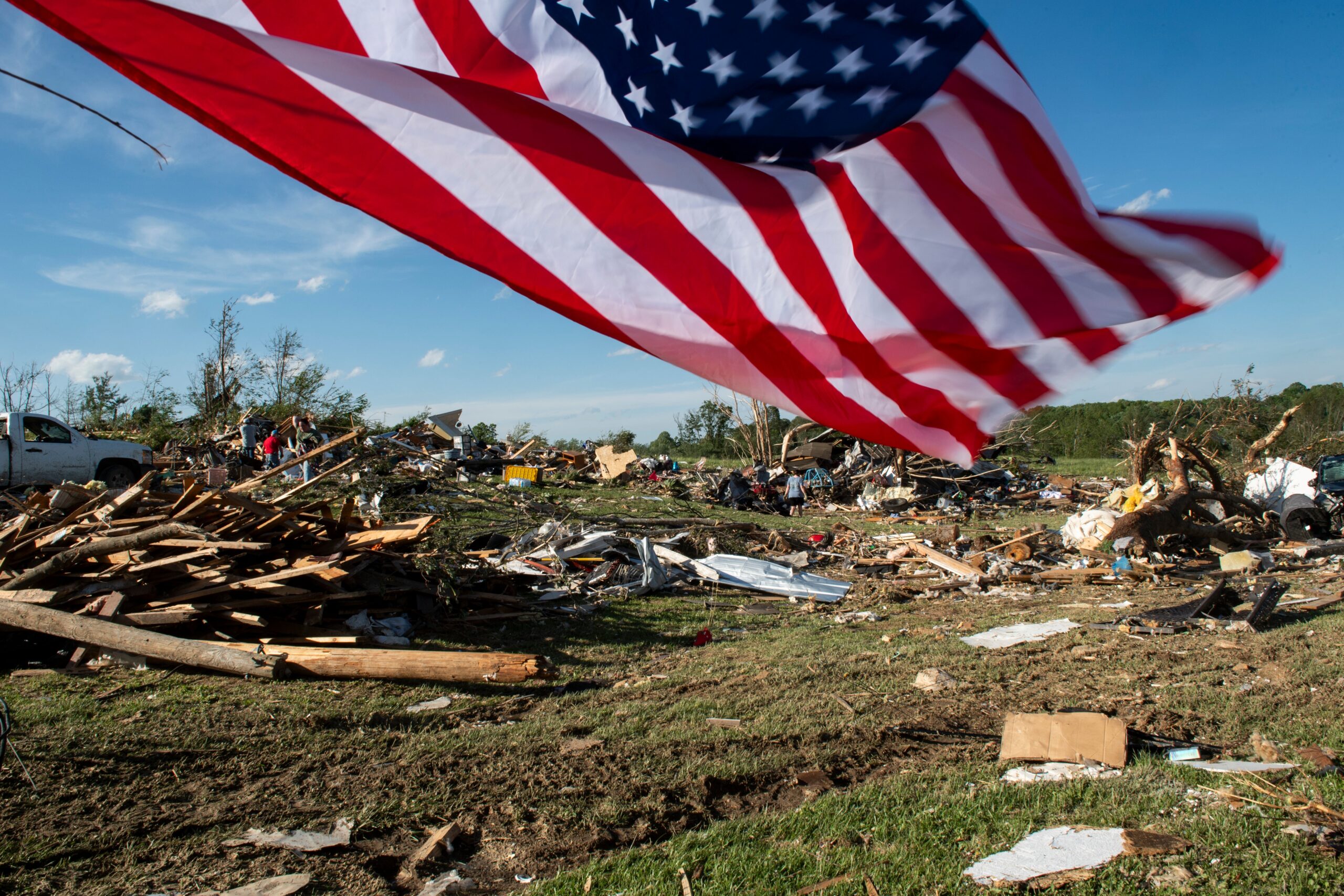The city of St. Louis is witnessing the consequences of President Donald Trump’s attacks on the Federal Emergency Management Agency (FEMA) in real time. And to be expected, it’s the city’s Black residents and other vulnerable groups who are suffering the most.
Suggested Reading
After a tornado ripped through St. Louis this past weekend, all eyes were on the federal government to see exactly how... and when, they would respond. Although FEMA finally began assessing the damages on Wednesday (May 21), according to STLPR, the government agency drew criticism over its delayed arrival.
On Monday (May 19), Missouri Gov. Mike Kehoe and St. Louis Mayor Cara Spencer pleaded for the president to send FEMA to their city. “On the local level, every organization, community member, elected official, has been on point. What we need right now is federal assistance,” Spencer told MSNBC. “This is what the federal government is for.”
The process of getting FEMA on the ground isn’t as simple as snapping your fingers. First, local officials have to send a formal request, which then must be approved by the president. This process can take days to weeks to occur, but as history has shown us, if FEMA help is delayed, local residents will pay the ultimate price.
Remembering Hurricane Katrina
This year marks the 20th anniversary of Hurricane Katrina in New Orleans. In the aftermath of the disaster which killed 1,800 people in 2005, FEMA was criticized for their delayed response. A Congressional report even found there was “a complete breakdown in communications that paralyzed command and control and made situational awareness murky at best” between the federal agency and local officials. This led to families without food, electricity and water and residents stuck in flood water with no help.
Even at the Louisiana Superdome, a shortage of supplies quickly devastated the New Orleans community. Of the victims, 51 percent were Black, according to the American Medical Association. Twenty years later, another city with a significant Black population is suffering a similar fate.
Black Families in St. Louis Left Alone
In St. Louis, a city with a 43.1 percent Black population, Black residents began recovering from the tornado alone. And after reports that emergency sirens and alerts never went off, people were left unprepared. “We’re sweeping up the ashes again,” rapper and activist Antoine White said of his hometown. “We’re dealing with disasters every day, in the aftermath of Ferguson. We’re dealing with poverty on an everyday basis, lead-tainted water, and violence.”
This comes months after Trump vowed to eradicate FEMA altogether. “I think we’re going to recommend that FEMA go away,” the president said during a January visit to survey the damage caused by Hurricane Helene in North Carolina. Trump has even gone as far as to halt funds to help Americans nationwide through FEMA and even ending a program which prepares for natural disasters like flooding and fires, according to the Associated Press.
Despite the federal agency lagging, several celebrities have expressed their sympathies and even offered to assist financially. Native St. Louis rapper Sexyy Red tweeted, “I have major plans to help us out I got us period... Let me know what yal need so I can help out for now #PrayForStLouis #STLStrong.”
Straight From 
Sign up for our free daily newsletter.



